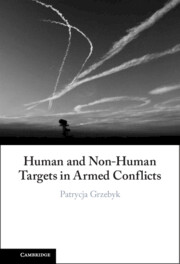27 results
Planning for War: Elite Staff Officers in the Imperial Japanese Army and the Road to World War II
-
- Journal:
- Asia-Pacific Journal / Volume 18 / Issue 21 / November 2020
- Published online by Cambridge University Press:
- 14 March 2025, e3
-
- Article
- Export citation
7 - The Militarized City
-
- Book:
- Tokyo
- Published online:
- 06 February 2025
- Print publication:
- 30 January 2025, pp 127-150
-
- Chapter
- Export citation
Chapter 7 - Defending the Solomon Sea and Bismarck Barrier
-
- Book:
- Yukikaze's War
- Published online:
- 06 June 2024
- Print publication:
- 06 June 2024, pp 137-158
-
- Chapter
- Export citation
32 - The First Total War? The Place of the Napoleonic Wars in the History of Warfare
- from Part V - Other Spheres of War
-
-
- Book:
- The Cambridge History of the Napoleonic Wars
- Published online:
- 20 December 2022
- Print publication:
- 02 March 2023, pp 665-681
-
- Chapter
- Export citation
16 - Churchill and the Bombing Campaign
-
-
- Book:
- The Cambridge Companion to Winston Churchill
- Published online:
- 19 January 2023
- Print publication:
- 26 January 2023, pp 316-341
-
- Chapter
- Export citation
Chapter 9 - War as Transformative
- from Part II - Change Agents, in Theory and Practice
-
- Book:
- Political Plasticity
- Published online:
- 15 January 2023
- Print publication:
- 05 January 2023, pp 101-114
-
- Chapter
- Export citation
Chapter 4 - War and Critical Theory
- from Part I - Origins and Theories
-
-
- Book:
- War and Literary Studies
- Published online:
- 15 January 2023
- Print publication:
- 05 January 2023, pp 67-84
-
- Chapter
- Export citation
4 - National Land Planning
-
- Book:
- Science for Governing Japan's Population
- Published online:
- 10 November 2022
- Print publication:
- 17 November 2022, pp 122-172
-
- Chapter
-
- You have access
- Open access
- HTML
- Export citation
Total prevention: a history of schistosomiasis in Japan
-
- Journal:
- Medical History / Volume 66 / Issue 2 / April 2022
- Published online by Cambridge University Press:
- 01 July 2022, pp. 95-115
-
- Article
-
- You have access
- Open access
- HTML
- Export citation
Final Remarks: Towards a Unified Approach to Target Selection
-
- Book:
- Human and Non-Human Targets in Armed Conflicts
- Published online:
- 17 March 2022
- Print publication:
- 24 March 2022, pp 233-241
-
- Chapter
- Export citation

Human and Non-Human Targets in Armed Conflicts
-
- Published online:
- 17 March 2022
- Print publication:
- 24 March 2022
1 - Regionality and Total War in East Prussia
-
- Book:
- Violence in Defeat
- Published online:
- 12 February 2021
- Print publication:
- 18 February 2021, pp 18-63
-
- Chapter
- Export citation
Introduction
-
- Book:
- The Literature of Absolute War
- Published online:
- 30 April 2020
- Print publication:
- 28 May 2020, pp 10-39
-
- Chapter
- Export citation

The Literature of Absolute War
- Transnationalism and World War II
-
- Published online:
- 30 April 2020
- Print publication:
- 28 May 2020
1 - The World in 1937
-
- Book:
- World War II
- Published online:
- 18 May 2020
- Print publication:
- 30 April 2020, pp 8-41
-
- Chapter
- Export citation
14 - Violence and the First World War
- from Part III - Warfare, Colonialism and Empire in the Modern World
-
-
- Book:
- The Cambridge World History of Violence
- Published online:
- 13 March 2020
- Print publication:
- 26 March 2020, pp 286-303
-
- Chapter
- Export citation
The Trading with the Enemy Acts in the age of expropriation, 1914–49
-
- Journal:
- Journal of Global History / Volume 15 / Issue 1 / March 2020
- Published online by Cambridge University Press:
- 13 February 2020, pp. 81-99
-
- Article
- Export citation
6 - Military Necessity and Humanitarian Considerations
- from Part I - Concept, History and Basics
-
- Book:
- The Military Commander's Necessity
- Published online:
- 30 September 2019
- Print publication:
- 03 October 2019, pp 103-126
-
- Chapter
- Export citation
Part I - Concept, History and Basics
-
- Book:
- The Military Commander's Necessity
- Published online:
- 30 September 2019
- Print publication:
- 03 October 2019, pp 23-126
-
- Chapter
- Export citation
5 - Strategy: How to Think about Fighting for a Limited Political Objective
-
- Book:
- Why America Loses Wars
- Published online:
- 09 August 2019
- Print publication:
- 29 August 2019, pp 121-171
-
- Chapter
- Export citation

